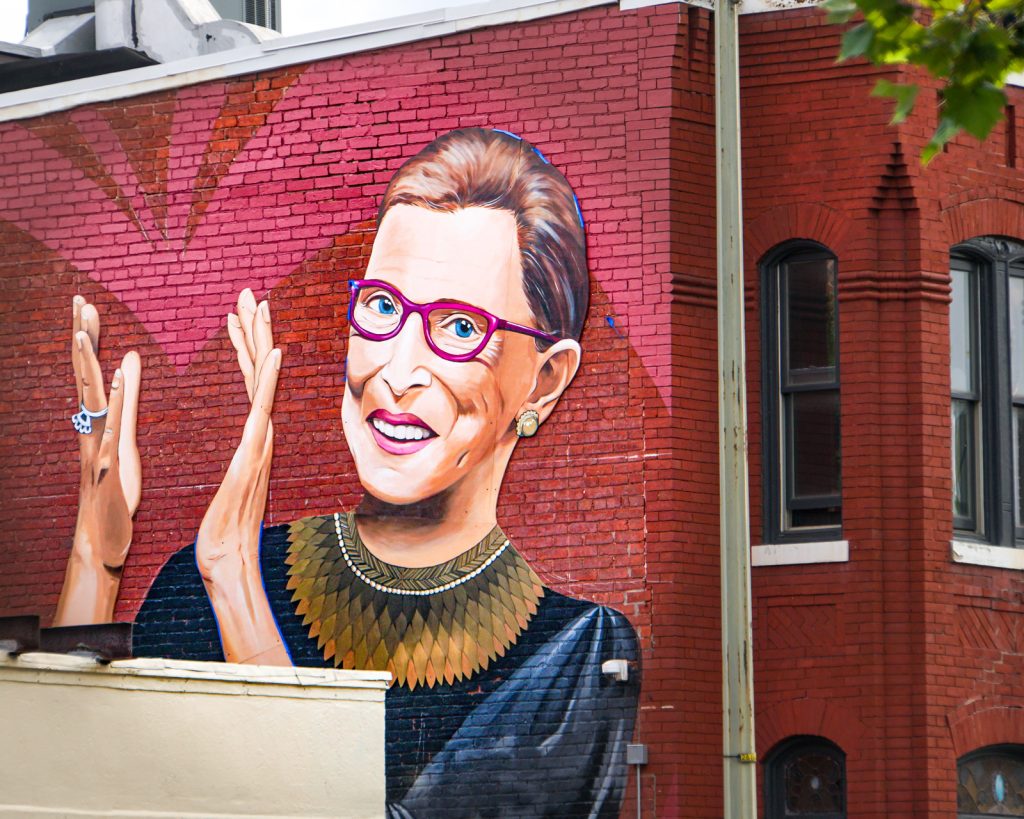
A prominent and liberal judge on the US Supreme Court, Justice Ruth Bader Ginsburg has died aged 87. She has now become the first women to be laid to rest at the US Capitol building. Although her passing has little impact on the UK, the legacy that she leaves can be an inspiration to us all.
The Supreme Court in America constitutes one third of the government; the federal judiciary branch. The cases ruled on by those judges have changed the political landscape in the US whilst also advancing the rights of many US citizens. For example, the case of Brown vs Board of Education in 1954 led the Supreme Court to rule that racial segregation of children in public schools was unconstitutional. In 1973 Roe vs Wade saw the judiciary also give women the right to have abortions. The Supreme Court consists of nine justices, in order to always provide a majority when it comes to voting. The US president has the power to nominate their choice of replacement justice for the Court when one dies or retires. To many, this would appear to give the president some influence on the make-up of the theoretically unbiased court.
Ruth Bader Ginsburg, nominated in 1993 by President Bill Clinton, was only the second woman to serve on the Supreme Court after Sandra Day O’Connor served from 1981. Two additional women have served as judges on the Supreme Court since and both were appointed by President Obama during his time in office. RBG achieved so much in her lifetime using her power and influence for good and working tirelessly to advance equal rights, particularly for women in the US. In 1972 she founded the American Civil Liberties Union (ACLU) Women’s Right Project. This organisation fought more than 300 gender discrimination cases. Controversially in 2013 she became the first Supreme Court justice to officiate a same sex marriage, demonstrating her long held belief that all citizens should have the same rights.
RBG showed throughout her entire judicial career that she wanted to make changes that would impact millions of lives, to make a difference with her actions. Despite her advancing age and ongoing health concerns RBG did not slow down even in 2013 when she had two surgeries for pancreatic and colon cancer. She was not prepared to let her own health problems stop her achieving change for those she supported and advocated for.
With her passing, President Trump has now been gifted the opportunity to nominate a third person to the court of his own choosing. This could potentially move the ideological beliefs of the Court to a more conservative standpoint. It has been announced that his choice is Amy Coney Barrett, an open opponent of abortion and Obamacare. Even before RBG died, President Trump’s potential nominations were considered to be more conservative than liberal. This is why in July 2018 RBG declared that she aimed to stay within the judiciary for five more years as she wanted to ensure she could live to see the end of Trump’s presidency as she knew his choice as replacement would shift the balance of the court to a more conservative bias, dismissing much of her hard work to liberalise the system.
The current situation is being viewed in comparison to when another member of the Supreme Court, Judge Scalia, died in 2016. President Obama had lined up his choice nomination, but he was blocked by the Senate majority leader Mitch McConnell, a Republican, claiming that it was too close to the election to make changes even though the election was 11 months away. Although this time there is less than a month before the election, President Trump does not agree that this is too short a time to change the make-up of the Supreme Court.
If it can be blocked in accordance with Ginsburg’s wishes, then there is a chance that if Biden were to become the next president he could nominate a more centrist judge to balance the court. An equal Supreme Court would fulfill its purpose of upholding the constitutional rights of United States citizens, rather than being taken advantage of for a president’s personal political agenda.
